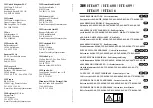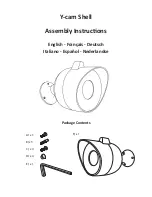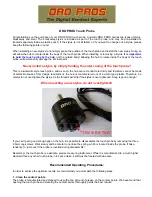
13
Reminder: foremost, you
need to set the extrados
dogvane to horizontal. This
will tell you the power
required to start is there, in
your sail (picture 39).
Let the landyacht start, then when you move at a minimum speed of about 10 to 15 km/h, you can start
hauling the sail taut. The landyacht speeds up and you can keep hauling the sheet taut, until the intrados
dogvane gets horizontal too. Watch out: do not haul the sail sheet too quickly. If you do so, you may
disturb the laminar air flow along the sail and the landyacht will eventually fail starting (or if you already
are moving, the wind can “stall”, I mean the sail loses its laminar air flow and the landyacht slows down or
eventually stops).
Do not forget that the extrados is twice more important than the intrados as it contributes to about two
thirds to the landyacht power. Thus keep thinking easing the sail sheet enough in order to at first thing,
stabilize horizontally the extrados dogvane.
When riding, if you notice the extrados dogvane is shaking randomly, this means the air flow is turbulent
and that the sail is too flat. When this happens, check free the sail sheet to get the power back, to help
catching the draught; you can even head on to the wind (get closer to the wind direction) a little in order to
recover a laminar air flow. As soon as the extrados dogvane is back to the horizontal position, the power is
back and you can ride back to your original direction (picture 40).
Picture 40: back to the right direction of the landyacht when the extrados dogvane is shaking randomly and is not
horizontal.
Wind
The extrados
dogvane is horizontal
and straight
The extrados
dogvane is away
from the sail
The extrados dogvane is shaking randomly
Wind
Intrados
Extrados
Dogvane correctly
set: horizontal and
straight
Picture 39: perfect
setting of the
extrados dogvane.


































